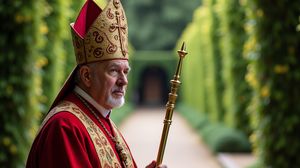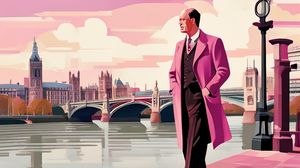
The Charlie Chaplin Blue Plaque commemorates the legendary silent film actor and filmmaker, widely considered a key figure in the motion picture industry. This plaque is significant as it marks one of the places associated with Chaplin's early life, symbolizing the humble beginnings of a man who went on to become one of the most iconic figures in cinema history.
Charlie Chaplin's early years in London were anything but glamorous. Born into poverty, his rise to stardom is a classic rags-to-riches tale. The blue plaque highlights his connection to Chelsea, a vibrant part of London that was once his home, tying his remarkable story to the city itself.
While Charlie Chaplin is known worldwide for his iconic role as "The Tramp," his influence extends beyond acting. As a filmmaker, Chaplin was a pioneer, revolutionizing the way movies were made and captivating audiences with his blend of comedy, pathos, and social commentary. The plaque serves as a gateway to exploring his multifaceted contributions to entertainment.
Unlike most celebrities of his time, Charlie Chaplin wrote, directed, and scored many of his own films, showcasing his extraordinary versatility. Visitors intrigued by his genius can start their journey at the plaque, diving deeper into his extraordinary life through various other exhibits and resources across London dedicated to his legacy.
Chaplin's London is a city of contrasts, much like the man himself. His ability to find humor and humanity in the face of hardship was not just a theme in his films but a reflection of his own life experiences in the city. The plaque invites visitors to reflect on how Chaplin's London shaped the artist he became.

Making the Most of Your Visit:
Start by taking a moment to appreciate the setting of Chelsea itself, where the plaque is located. This neighborhood has a rich history and charm that adds context to Chaplin's story, so take a stroll around to soak up its unique vibe.
If you're keen to delve deeper into Chaplin's early life, take some time to research or even visit other Chaplin-related sites in London, such as the nearby Lambeth where he spent much of his childhood. Understanding these areas can offer deeper insights into his formative years.
Since the plaque marks a private residence and isn't a full museum exhibit, I recommend combining your visit with one to a nearby cinema or film exhibit that features silent films or maybe even a Charlie Chaplin film screening, to truly appreciate his work after seeing where he began.
For photography buffs, early morning or late afternoon can provide the best natural light for your photos of the plaque and the surrounding area, offering a more atmospheric capture of your visit.
Finally, carry a notebook or some way to jot down your thoughts. Standing in a place that played a role in shaping such a monumental figure can be quite inspiring, and you may find that your reflections on his life and work as you stand there are worth recording.

Visiting Times & Costs:
The Charlie Chaplin Blue Plaque is located on a public building and is accessible to the public at any time. There is no entrance fee to view the plaque as it is part of the exterior facade of a building.
However, since it is on private property, it is important to be respectful of residents and visitors to the area. There are no designated opening hours as the plaque is mounted outdoors, and viewing can be done at any time of the day or throughout the year.
Regarding accessibility, the plaque is typically visible from the street, making it accessible for most visitors, including those with mobility issues. Nevertheless, it is advisable to check the street's current conditions, as some areas may have uneven pavements or limited vehicle access.

Address & Map:

Nearby:























